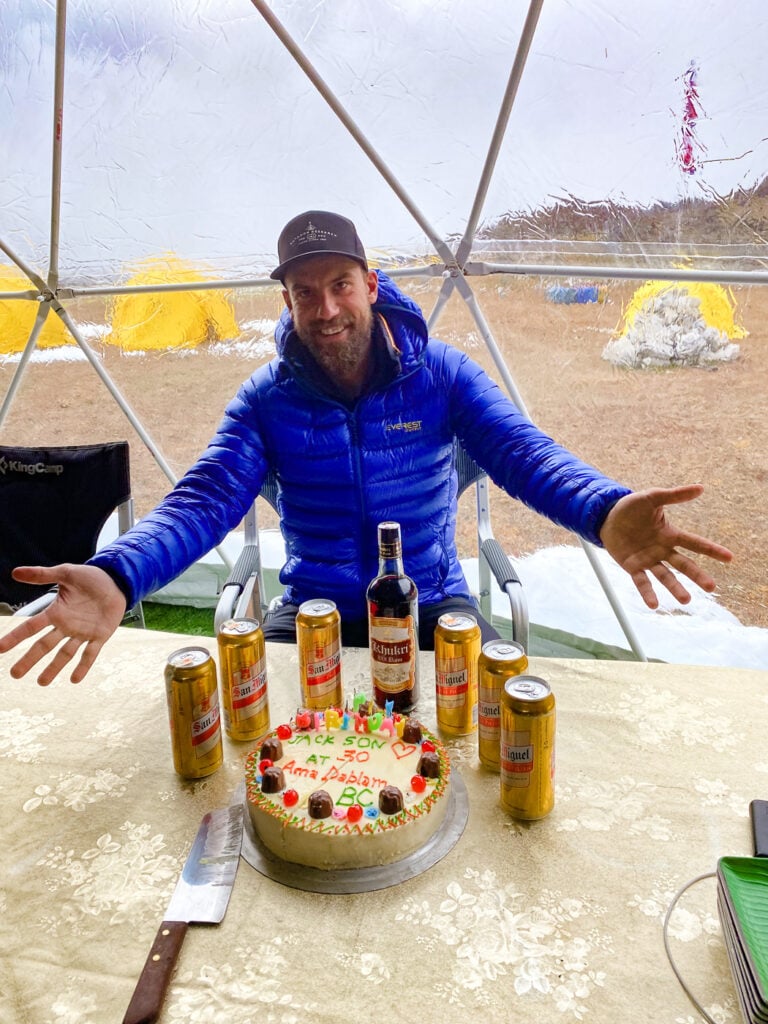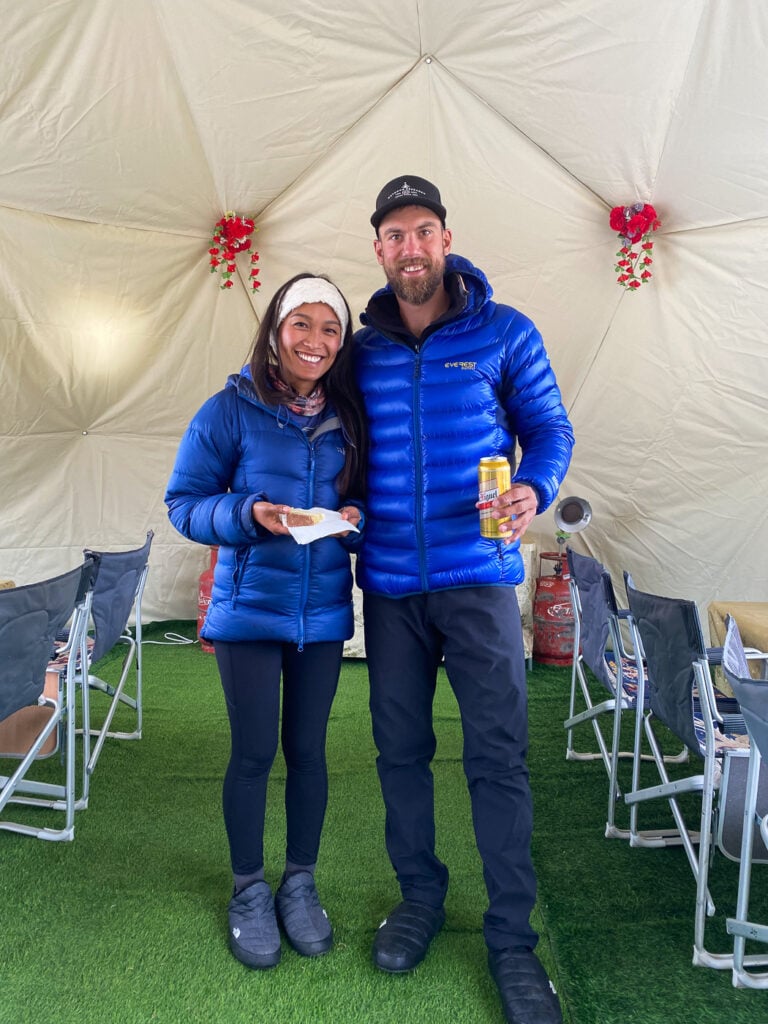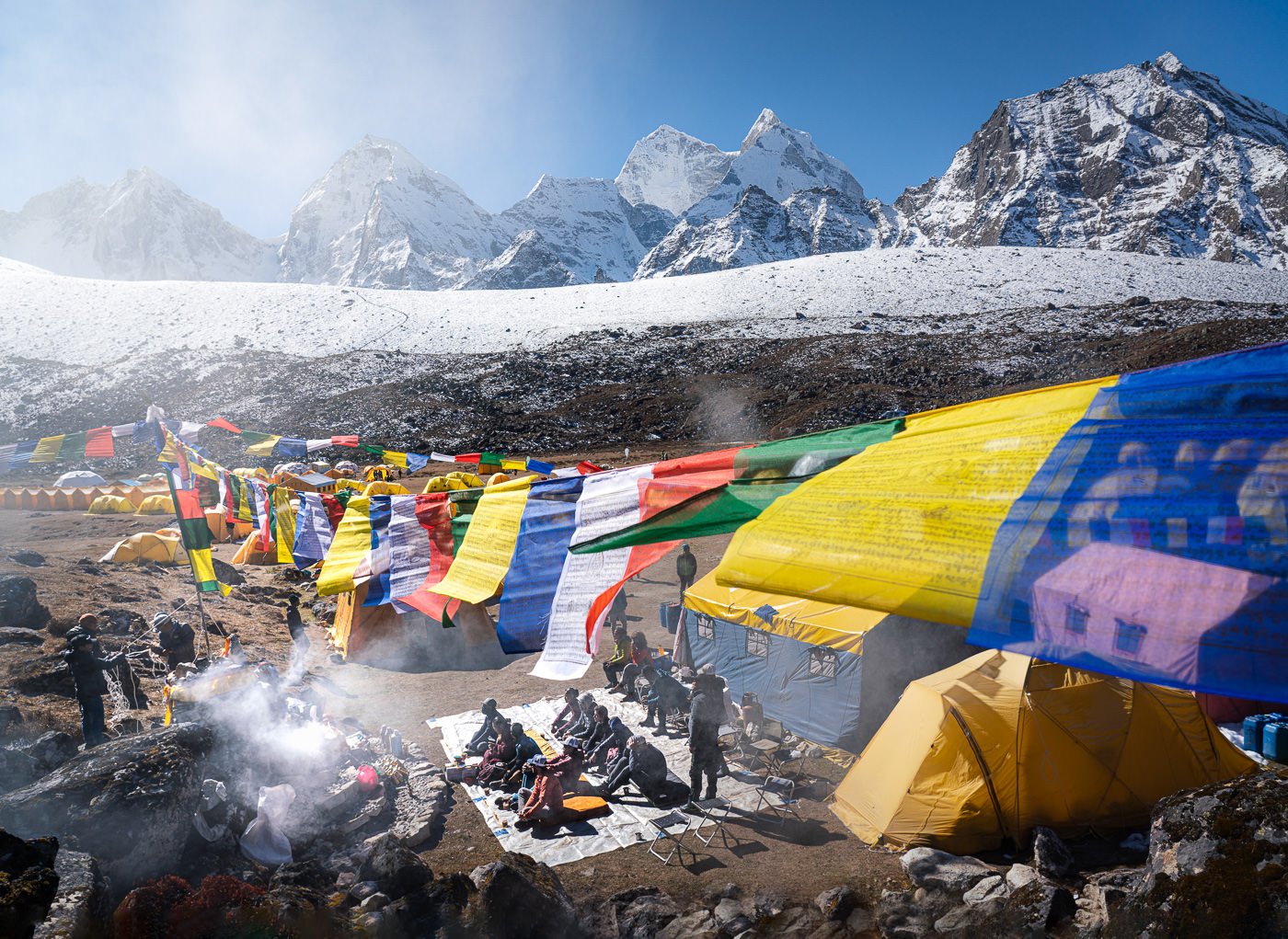The Ama Dablam adventure kicked off with the trek to basecamp. Our Journey began at Kathmandu airport where we boarded a flight on a rickety old plane taking off in the direction of the infamous Lukla Airport. Flying out of the busy and colorful Kathmandu was the last time we would see city civilization for a month, as we headed deep into the Khumbu. The plane flight isn’t for the faint-hearted. The pilot cruised perilously close to the mountains before landing on the upward sloped and dramatically short runway into Lukla, the port to the Himalayas.
It was a reminiscent landing for me, having trekked to Everest Base Camp four years earlier. Not much has changed in Lukla. Despite the huge influx of trekkers and tourists over the years, Lukla has kept its mountain charm. Our trek would not be quite as long as that of Everest Base Camp. The journey to Ama Dablam Base Camp is quite a pleasant hike over five days with one ‘rest’ day or acclimatization period. There are a couple of different route options but our itinerary was as follows.
- DAY 1: Lukla to Phakding (7km)
- DAY 2: Phakding to Namche Bazaar (10km)
- DAY 3: Rest day
- DAY 4: Namche Bazaar to Phortse (12km)
- DAY 5: Phortse to Ama Dablam Base Camp (11km)
I won’t go into great detail about the trek because the focus of this article is the Ama Dablam Climb. In fact, many people simply flew by helicopter to Ama Dablam Base Camp and skipped the trek entirely. However, I believe it’s a great part of the expedition and helps climbers acclimatize but also to get a feel of the towns and local culture along the way. Therefore, I’ll share a few photos and thoughts from our five-day trek from Lukla to Ama Dablam Base Camp.
After landing in Lukla, we had a short, 7-kilometer walk to the small riverside town of Phakding. This first day of walking is actually mostly downhill despite some undulation with a net loss of a few hundred meters. It will be the last day downhill until you return from the summit of Ama Dablam! The shady route winds through the forest while maintaining close proximity to the river rapids below. With just a couple of hours’ worth of walking, you will find your rhythm and learn how to avoid the donkey and yak caravans, which cart supplies up and down the mountain. Phakding has a number of cute teahouses and coffee shops to help you settle in for your first night in the Himalayas.
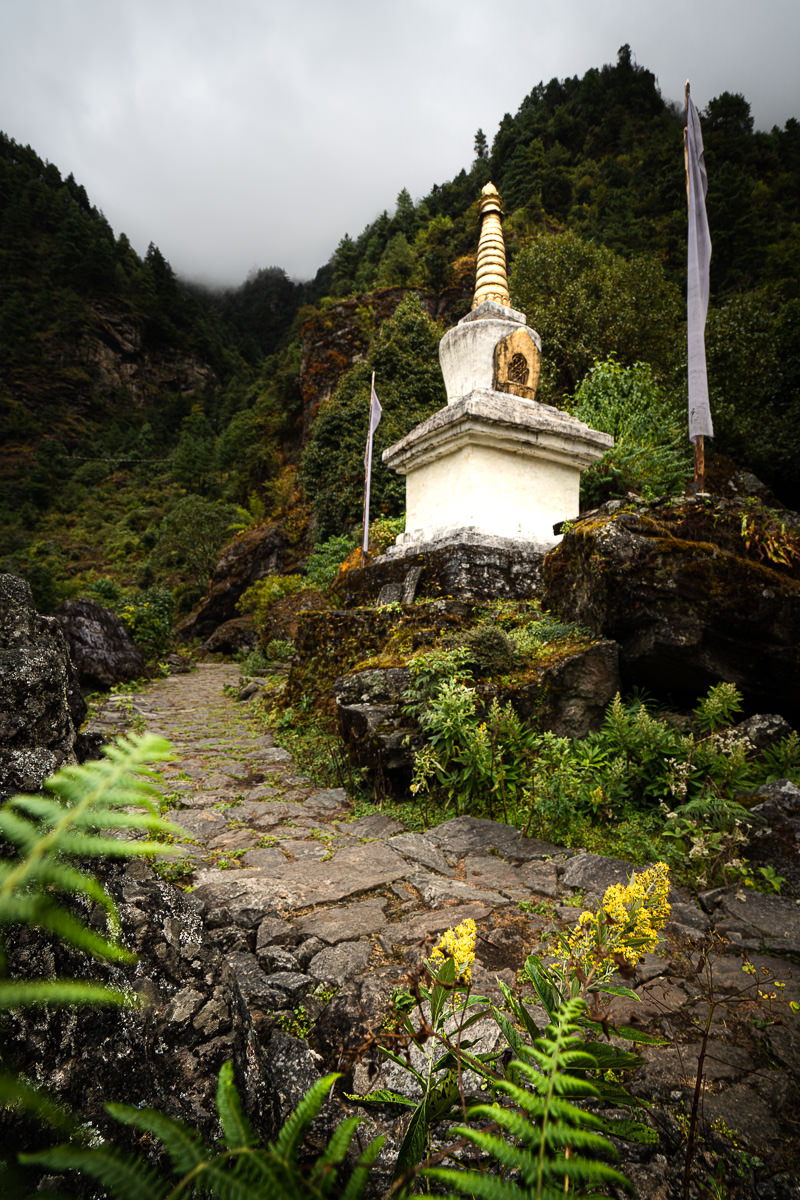
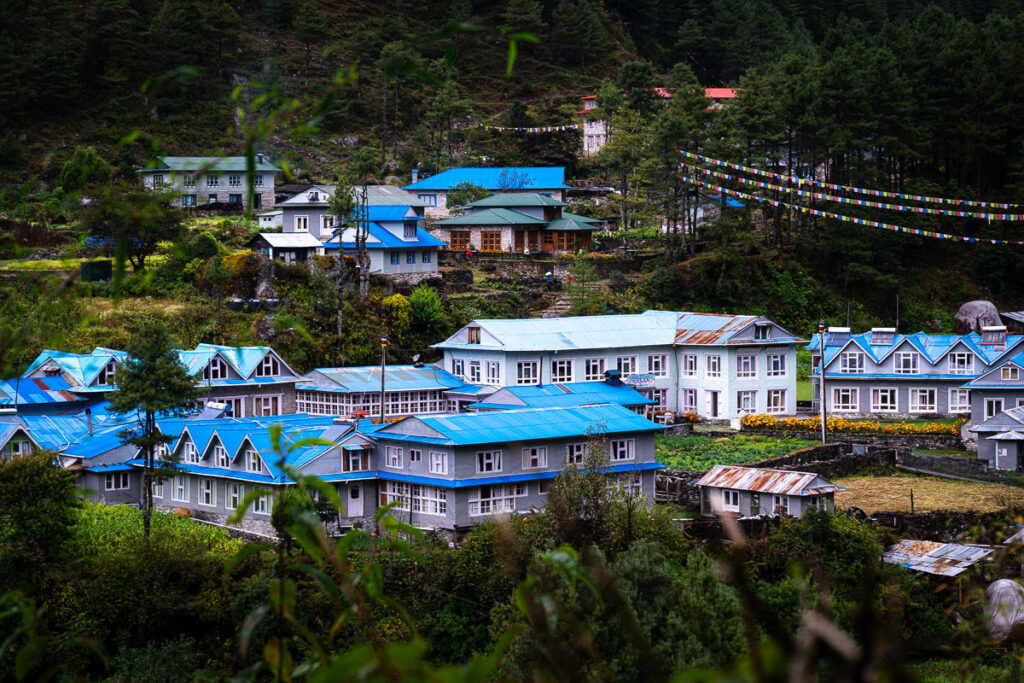
The second day of our trek to Ama Dablam Base Camp saw us heading towards the famous trading town of Namche Bazaar. The route crosses the river several times today, often on long suspension bridges draped in Tibetan prayer flags. After crossing the Hillary Bridge, there is some significant climbing to be done before reaching Namche Bazaar. The total incline for the day surpassed a vertical kilometer with more than 1000 meters climbed. Namche is one of my favorite towns with a rich history of climbing, Sherpa culture, and trekking. In Namche, you can find just about everything from trekking stores to cafes and even an Irish Bar. It’s one of the last times you will have a lot of ‘city luxuries’ available and a good chance to add anything to your pack you may have forgotten for the climb. We had a couple of nights here to help acclimatize and spent them at the Irish Bar for beers at night and the Sherpa Barista Cafe for coffee during the day.
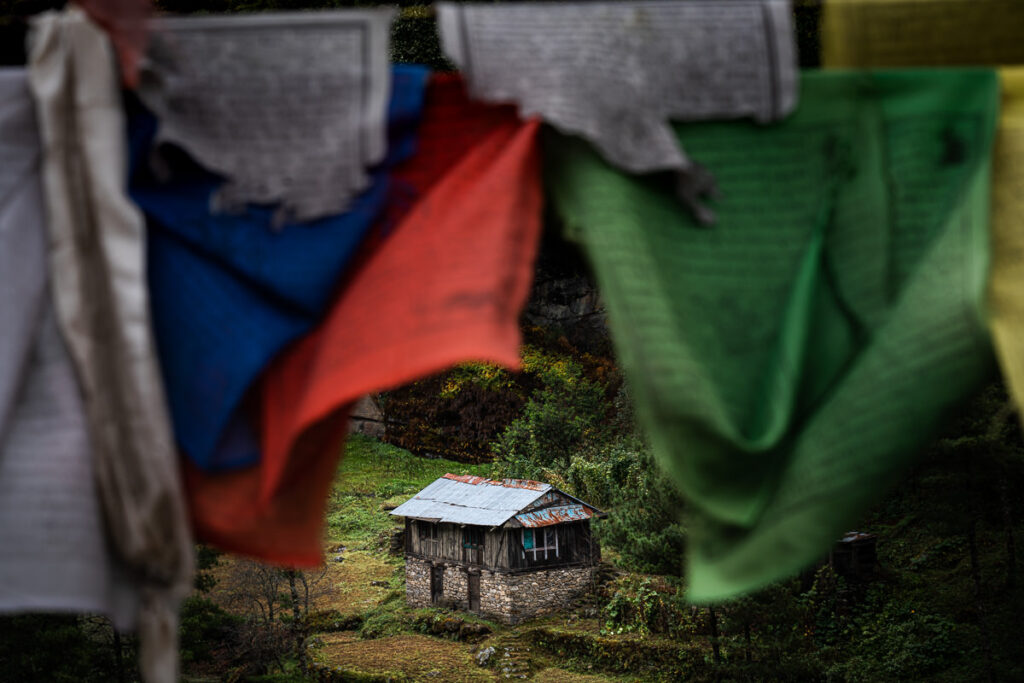
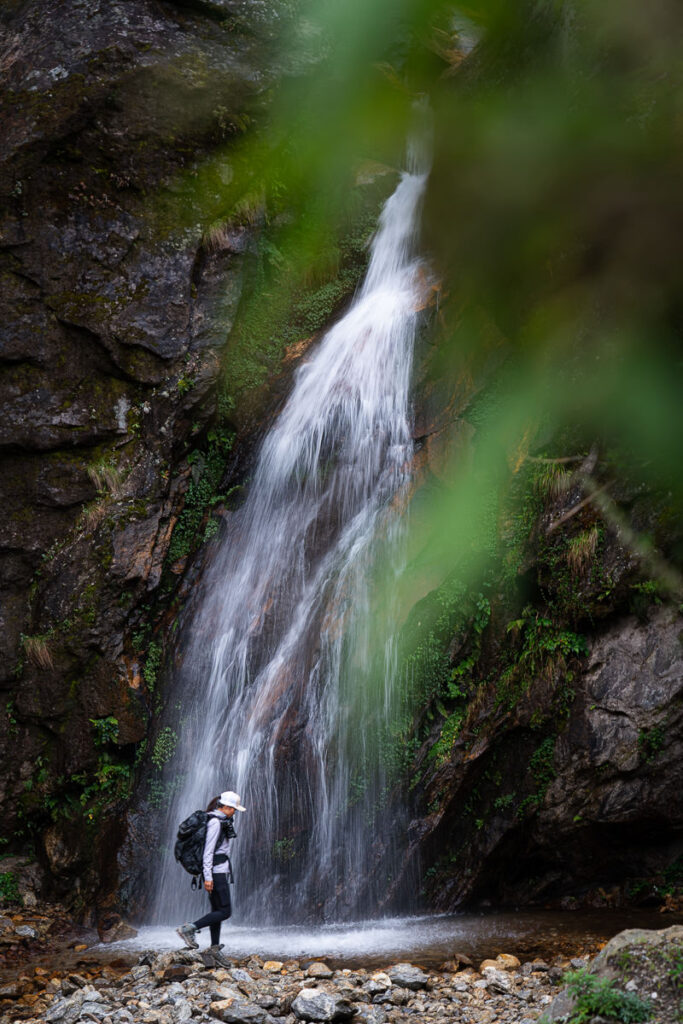
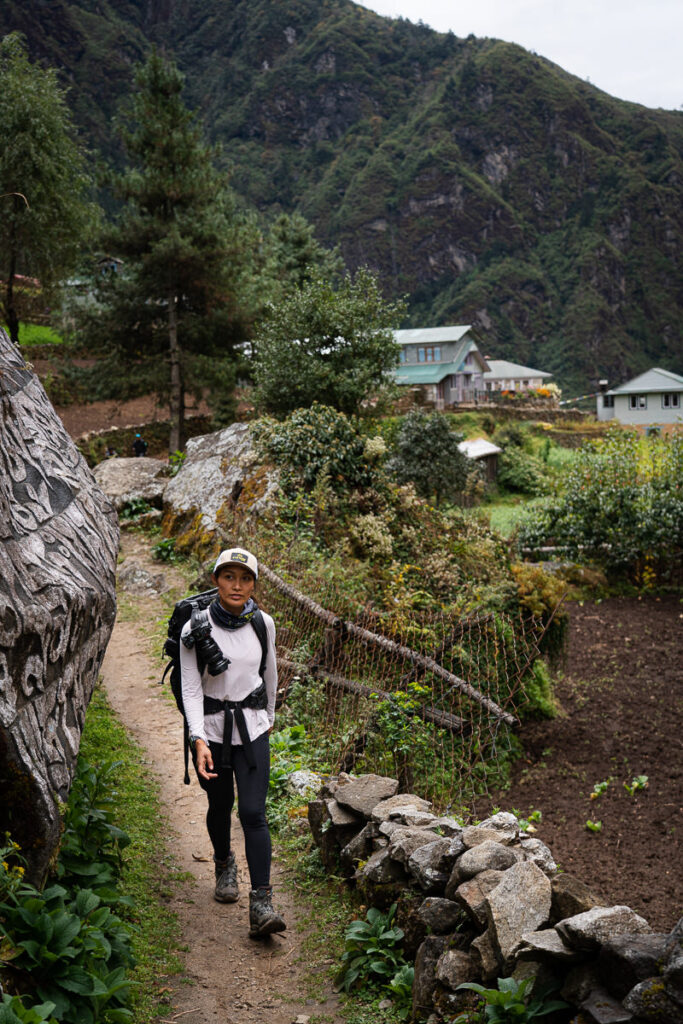
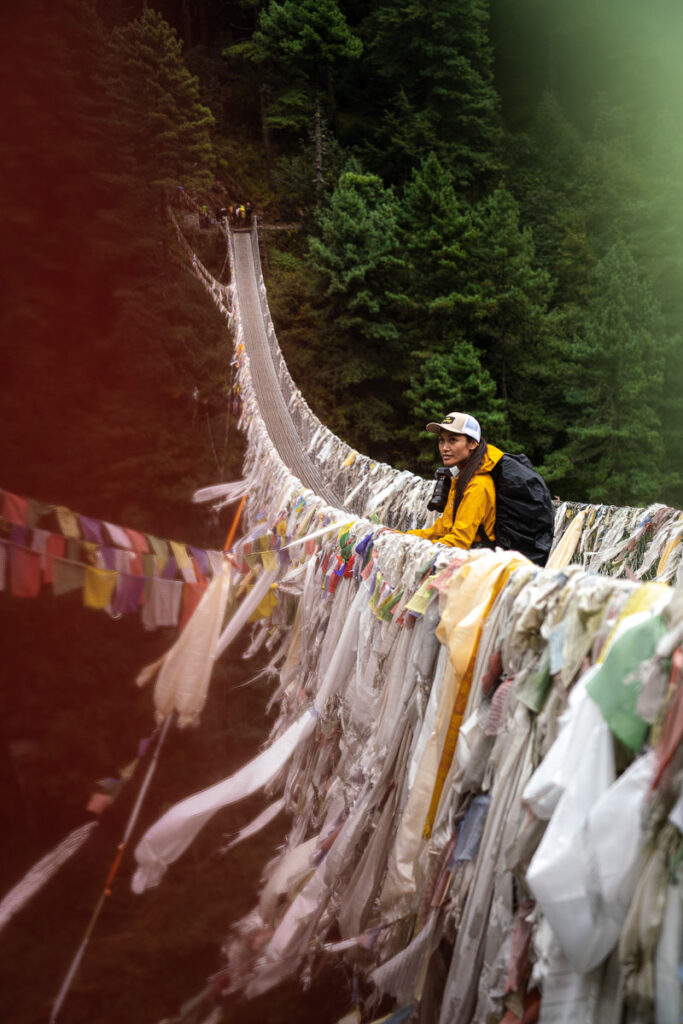
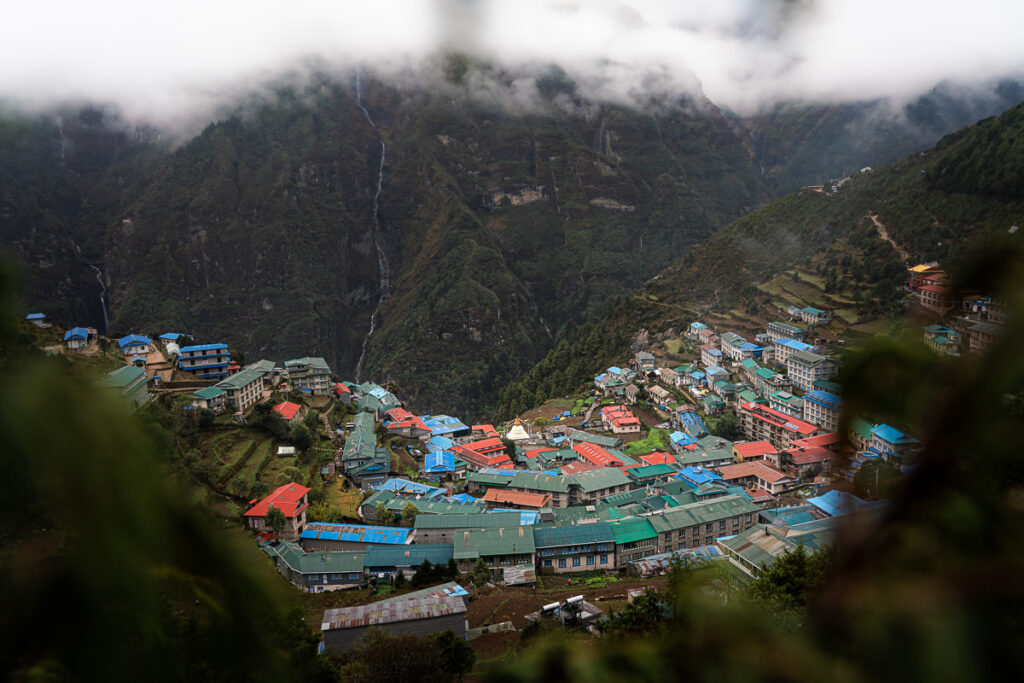
From Namche Bazaar, we trekked on to the village of Phortse. While it may be a small and seemingly innocuous village, there is something in the water of Phortse. This village has the most Everest summiteers per household of anywhere in the world. We had now settled into a trekking rhythm and were enjoying the coziness of the tea lodges along the way.
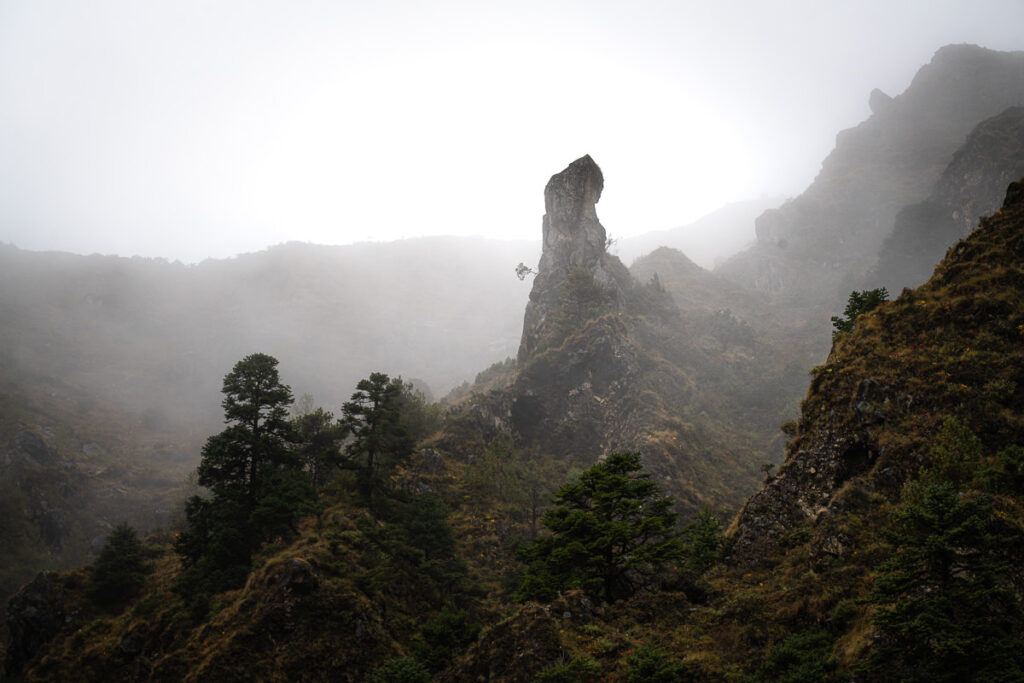
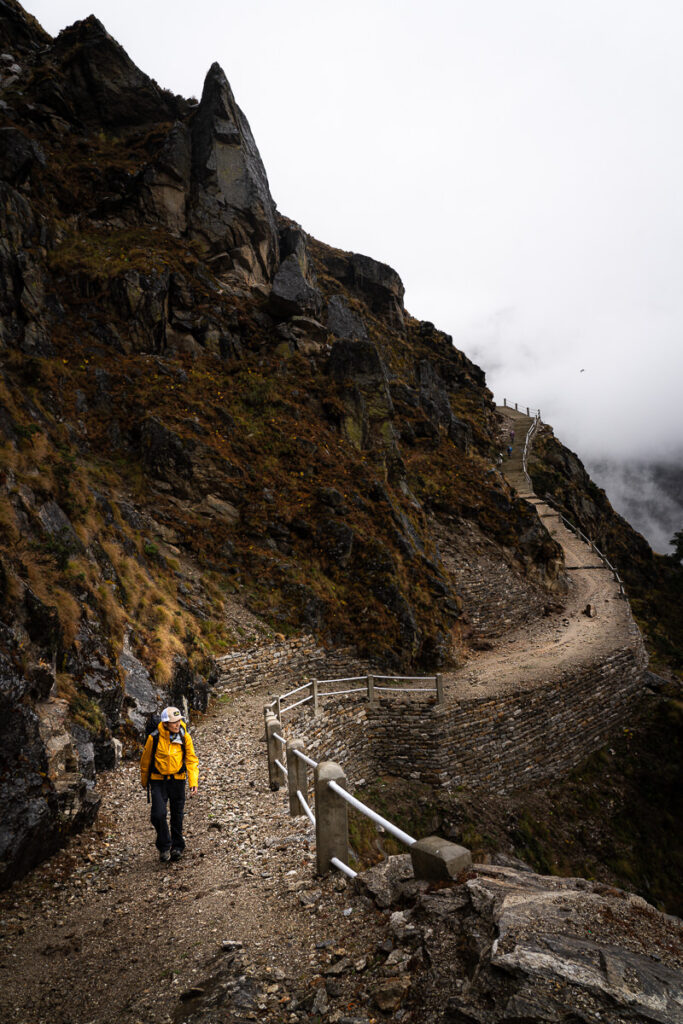
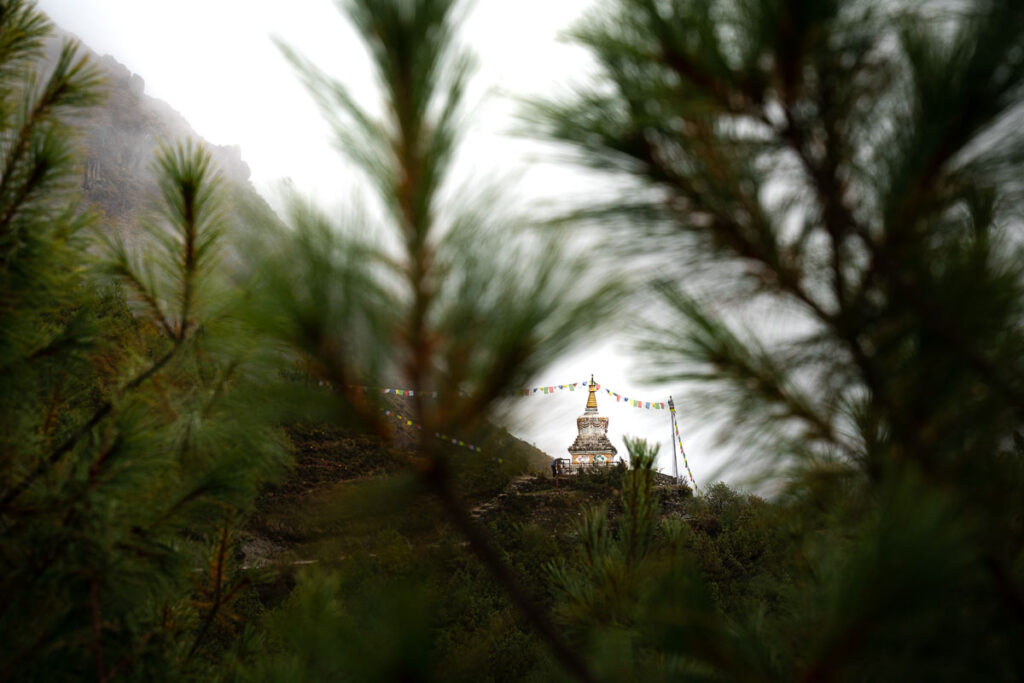
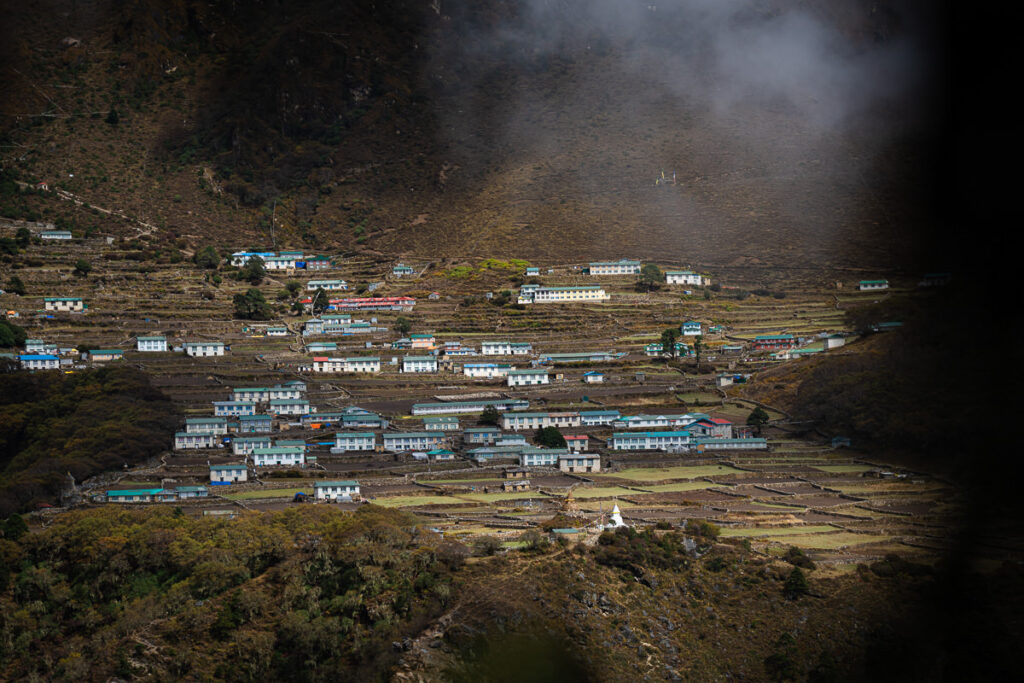
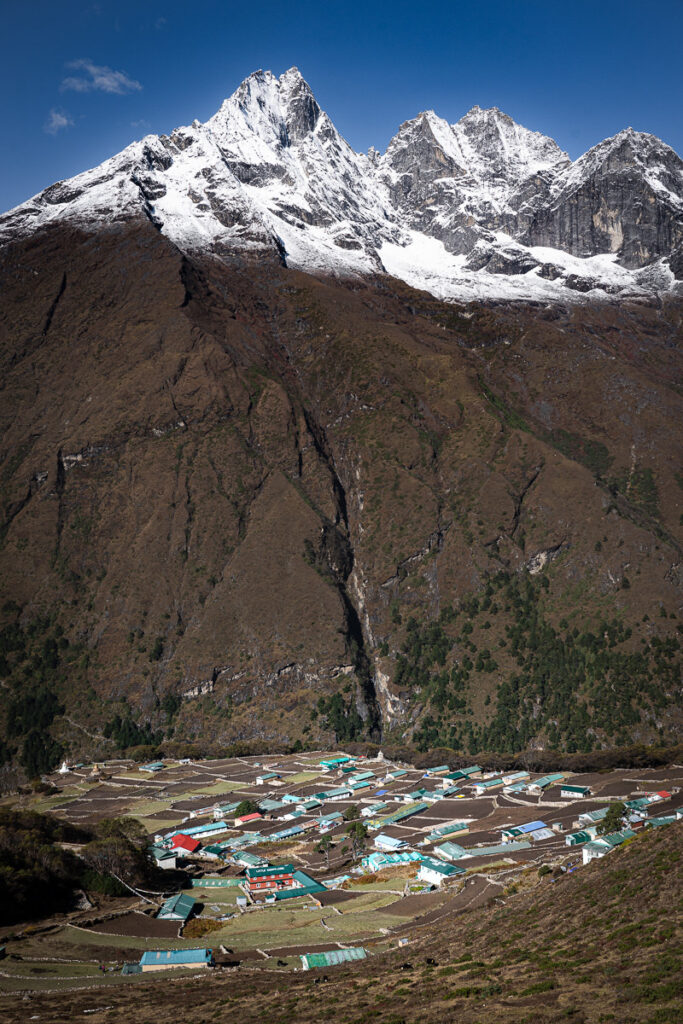
Our fifth and final day of trekking was arguably the most exciting. Not only were we nearing Ama Dablam Base Camp but after some gloomy weather in the previous days, we caught our first glimpses of the mountain we were going to climb. As the trail winds along the cliffside from Phortse to Pangboche, the view of Ama Dablam was just stunning. Once we reached Pangboche, we had to cross the river and make the steep but short climb up to Ama Dablam Base Camp at 4,600m. This would be our new home for the foreseeable future.
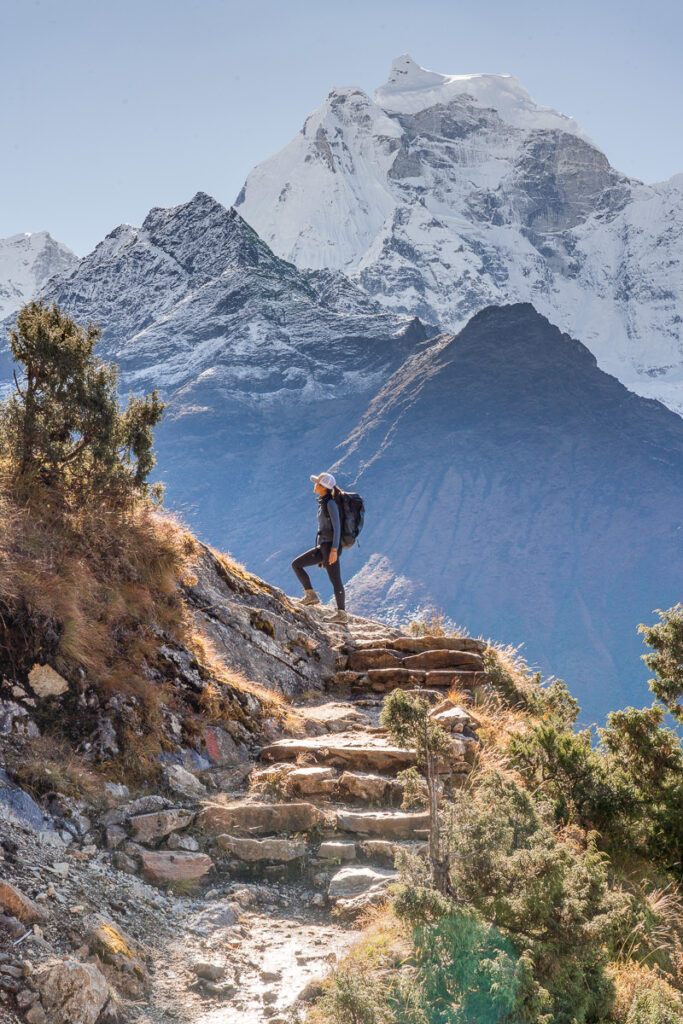
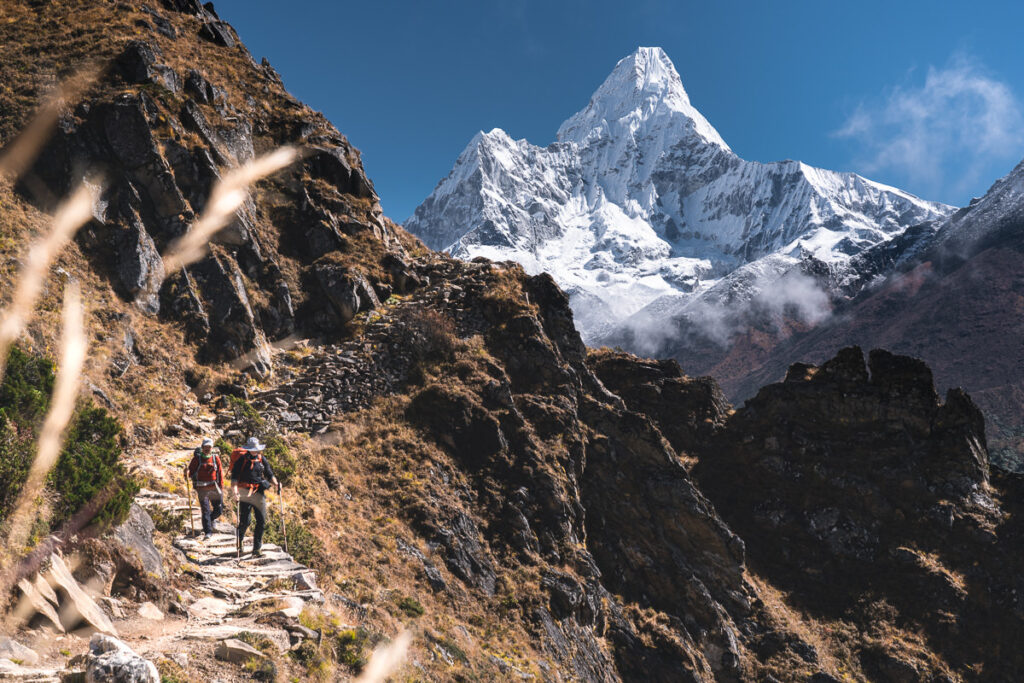
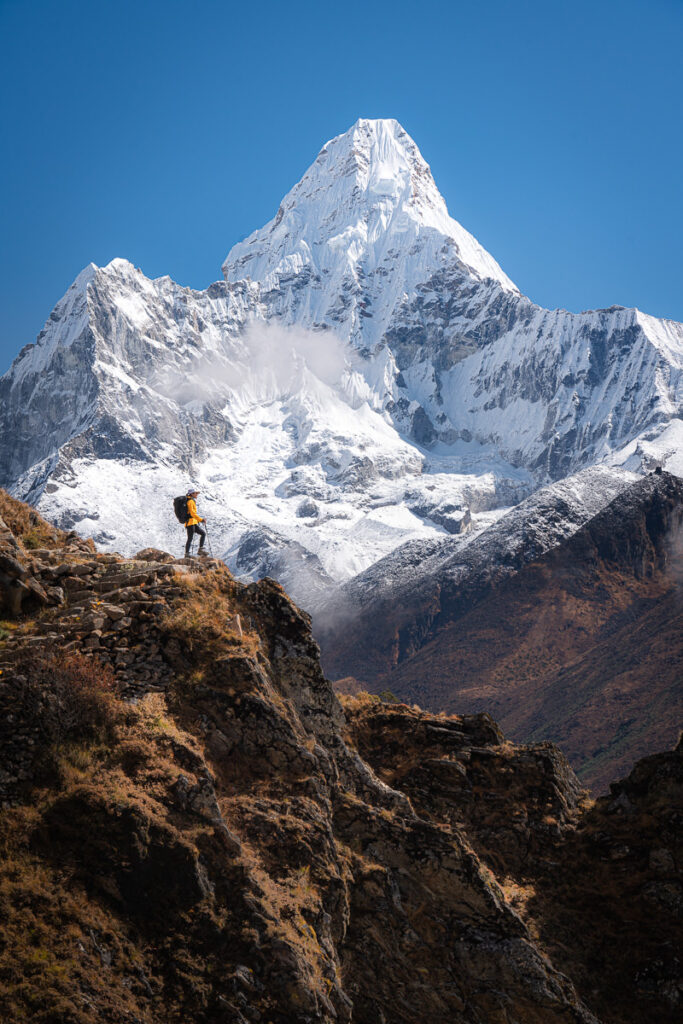

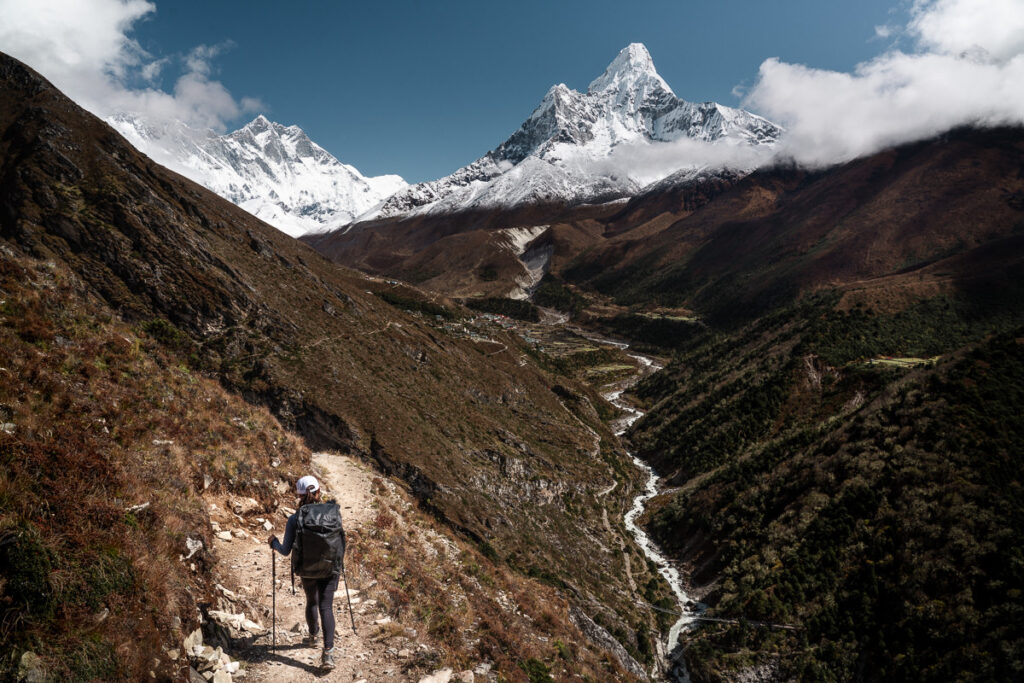
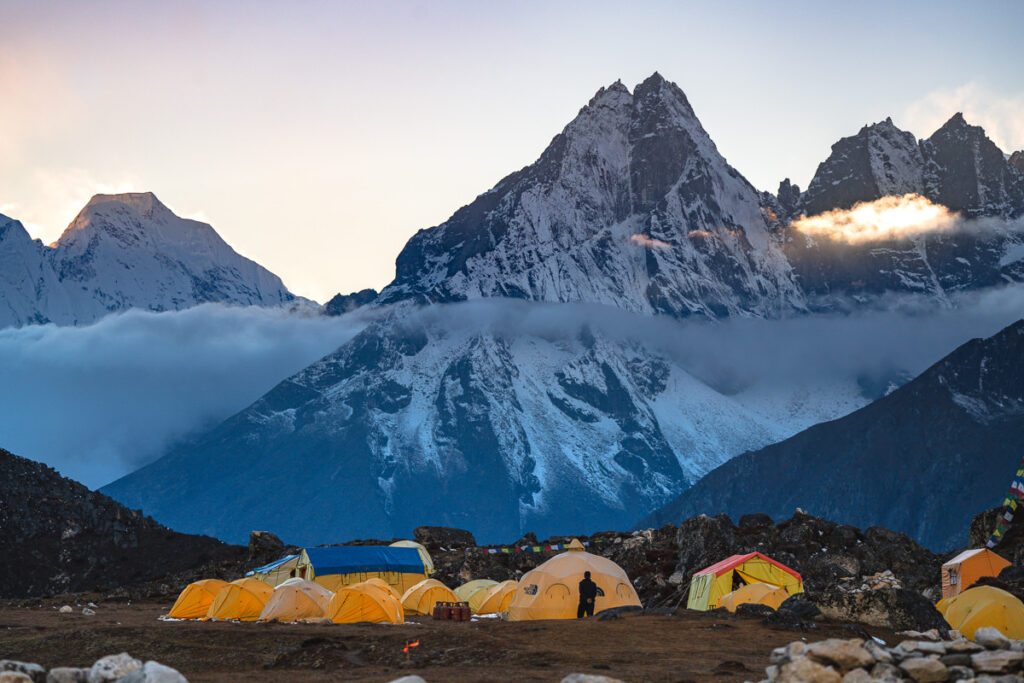
Ama Dablam Base Camp is known to be one of the best camps in the world. It has a lot going for it. With walls on all sides, this flat plateau has great wind and weather protection. Each morning the weather was perfectly clear and then clouds would roll in during the afternoon, but we did not experience one single day of rain. With a small river running through the center of the plateau, the water supply was fixed.
Seven Summit Treks definitely had the best base camp set up with two big dome tents for mess halls and dining rooms. Each had a heater inside and multiple charging areas for gadgets and gear. WiFi is connected from Everest Link and sometimes worked and sometimes struggled. I managed to share photos on social media and send emails so it was enough for me but video calls were often a stretch.
Surrounding the dome tents were the twin-share base camp tents, which were fitted with a plush, foam mattress and real pillows. It’s a great night’s sleep from within a tent and I found it very comfortable. The toilet is basically a small tent with a bucket that is beneath the rocks and emptied regularly. It’s basic but it works.
Each day we had breakfast, lunch and dinner served in a warm dome tent. The quality of the food was great overall and had a good mixture of western dishes and Nepali classics. Throughout the day, snacks and drinks were always ready and available to keep you nourished.
There were many different companies set up throughout the base camp but each had its own area and most people stuck to their own site. Seven Summit Treks was probably the most visited by other climbers and day-hikers due to the welcoming nature of the large dome tents and the volleyball court that held some intense matches.
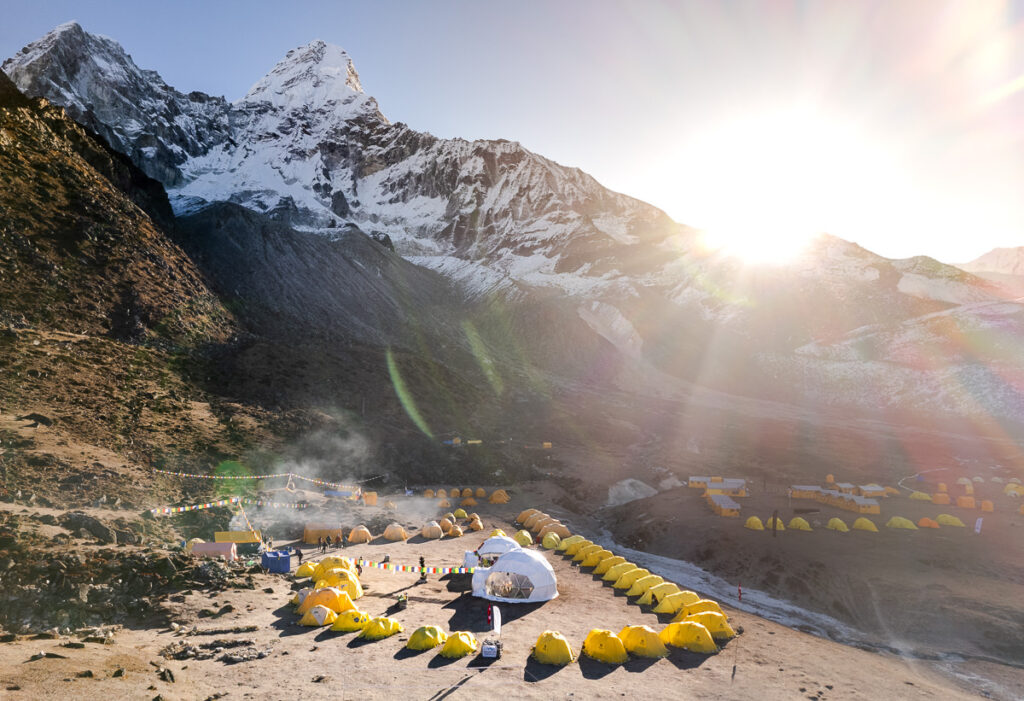
The Puja Ceremony is a tradition where the mountains are honored and we pray for safe passage. Local Sherpa people consider these mighty peaks to be Gods, and so the Puja ceremony is held not only to ask for safe passage but forgiveness for climbing up to these holy places. Our ceremony was held under an auspicious blue sky and with high spirits and is also a time for all the climber’s and staff to come together and begin to focus on the climb forthcoming.
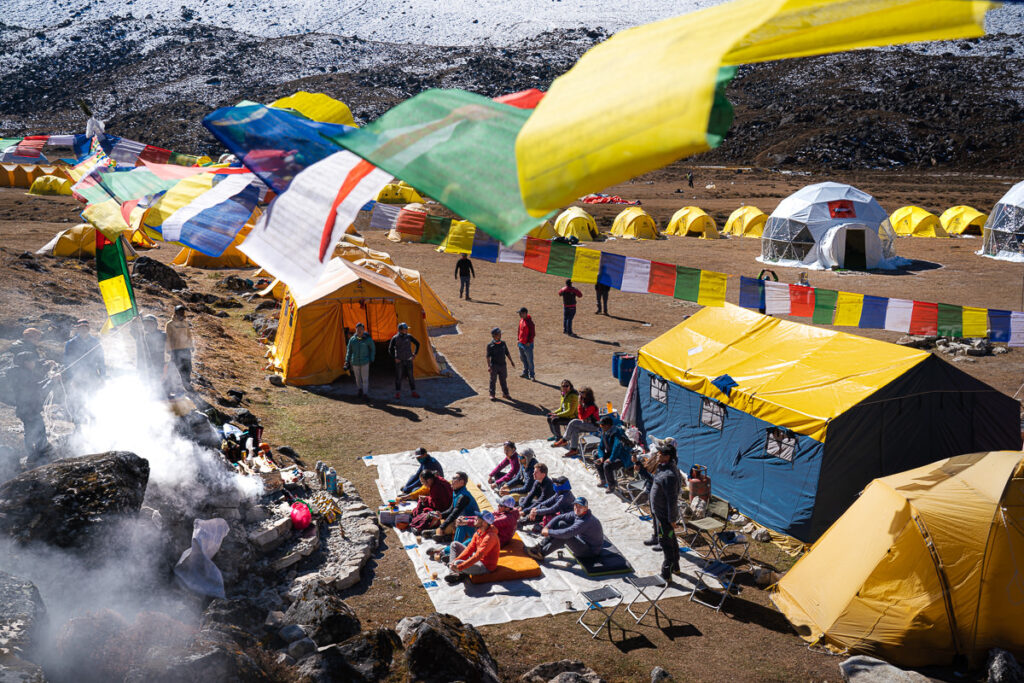
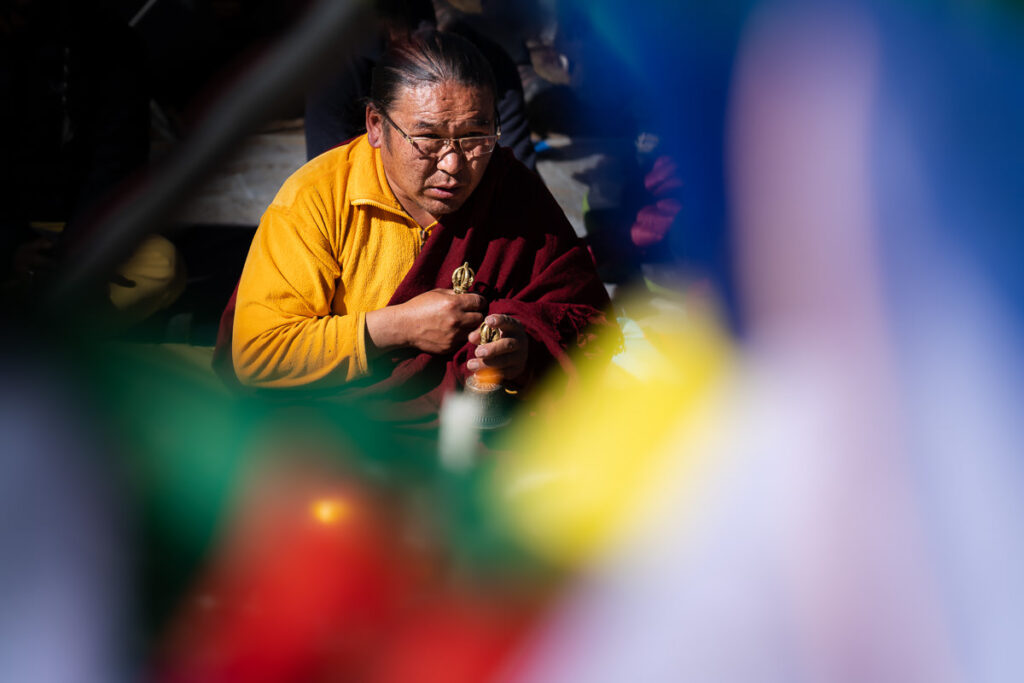
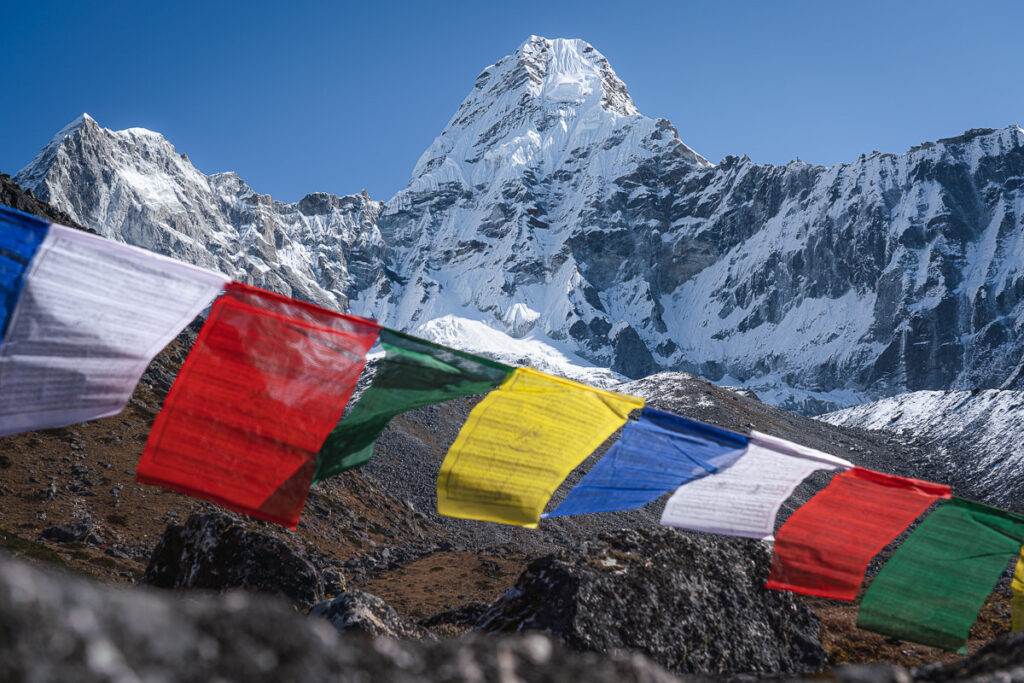
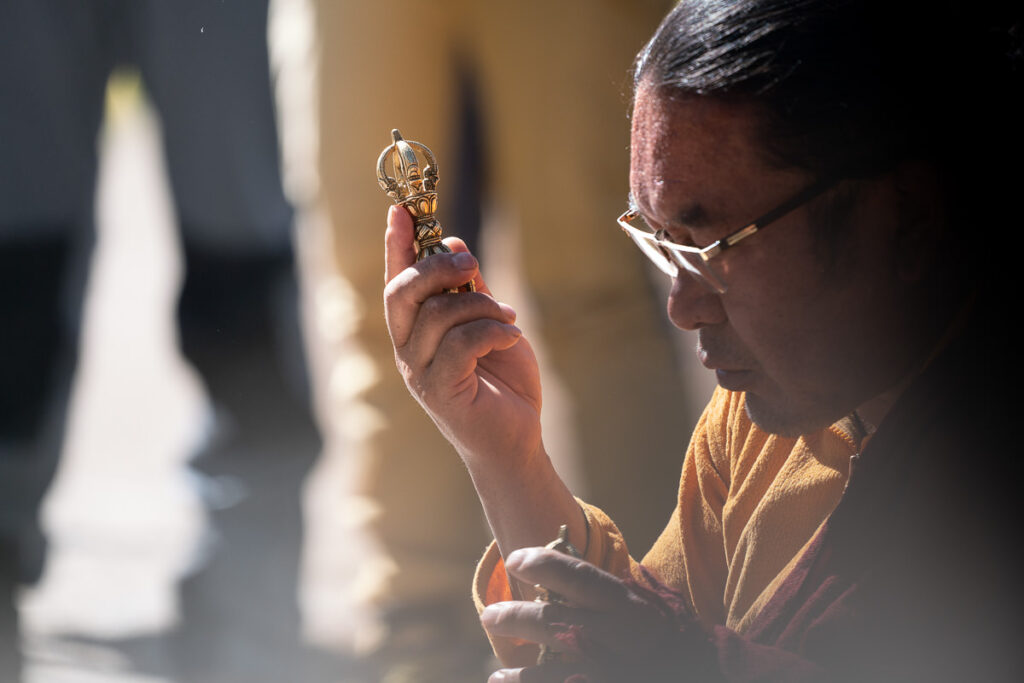
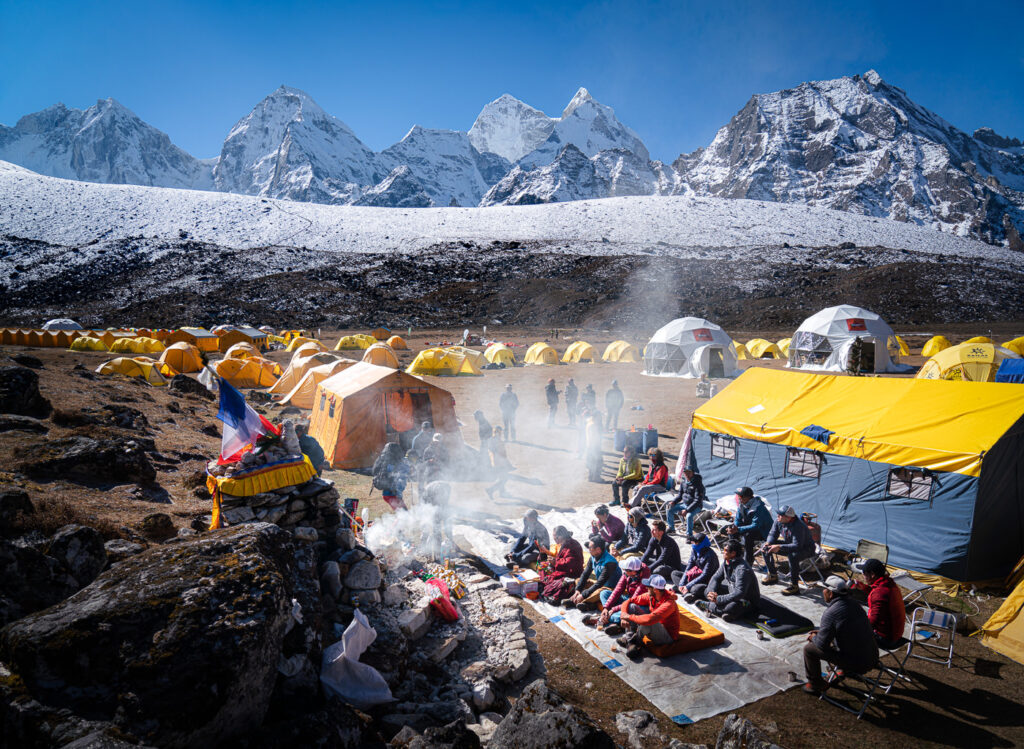
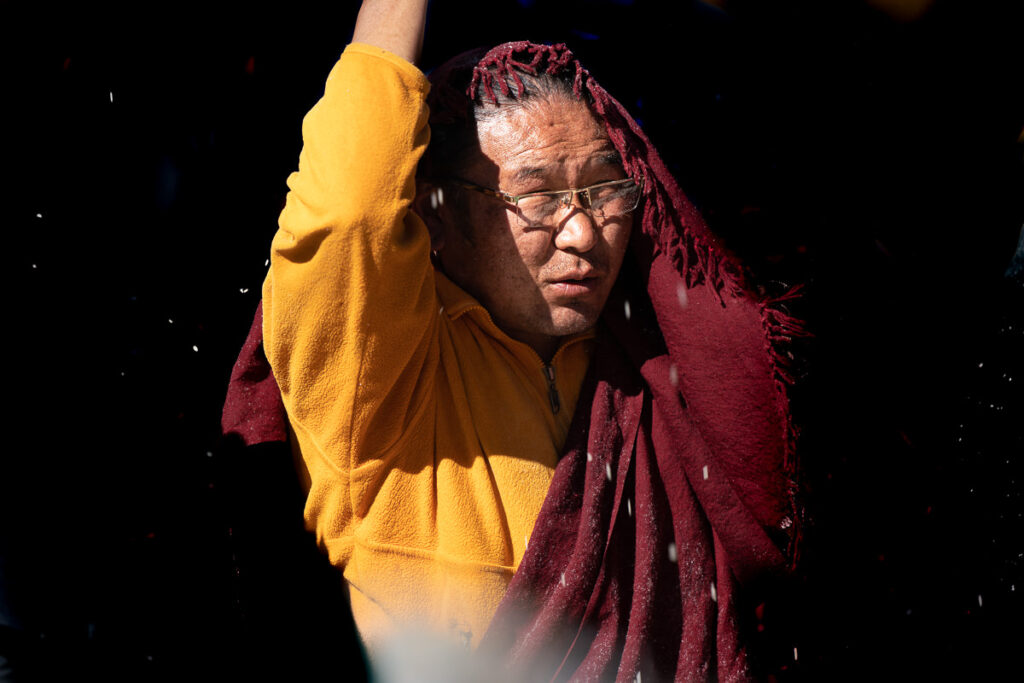
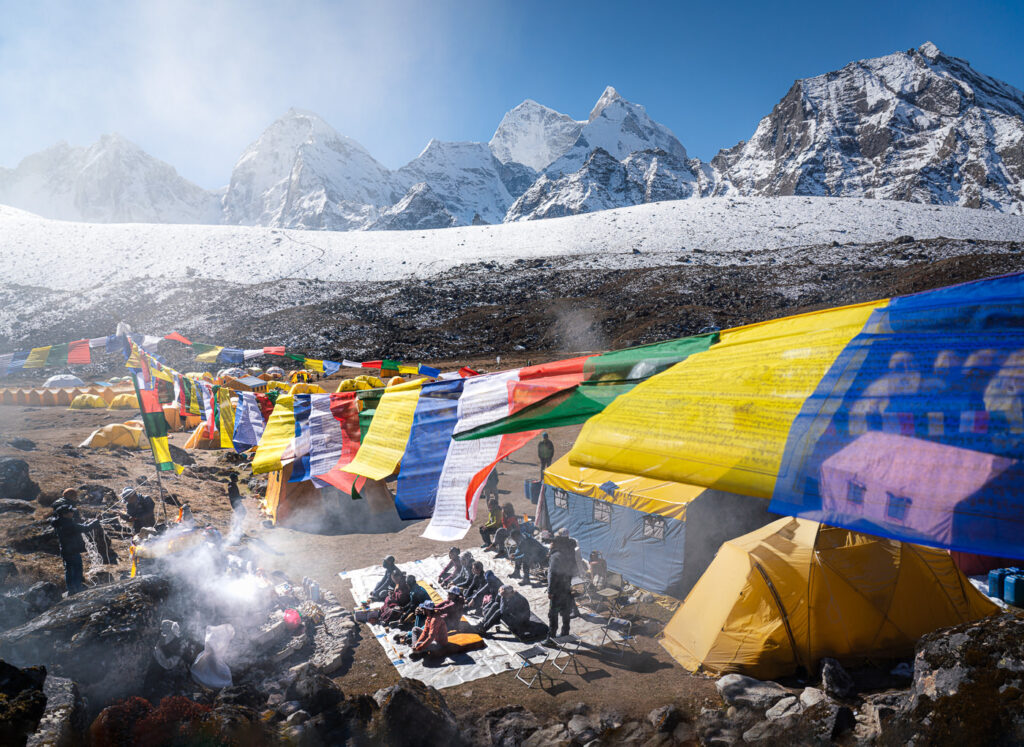
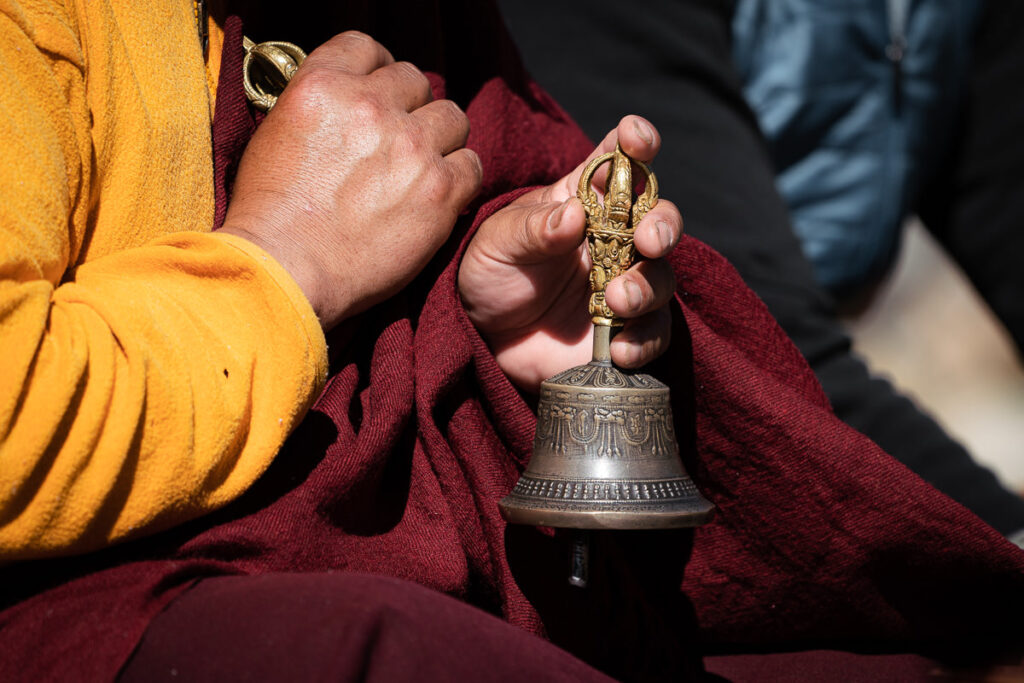
The trek-in was great and the Puja ceremony was incredible. However, the highlight of the week was having my birthday at 4,600m beneath one of the most beautiful mountains in the world. Thanks to the kitchen team and Pema for organizing a cake and a small round of festivities to make it feel like a birthday back home.
